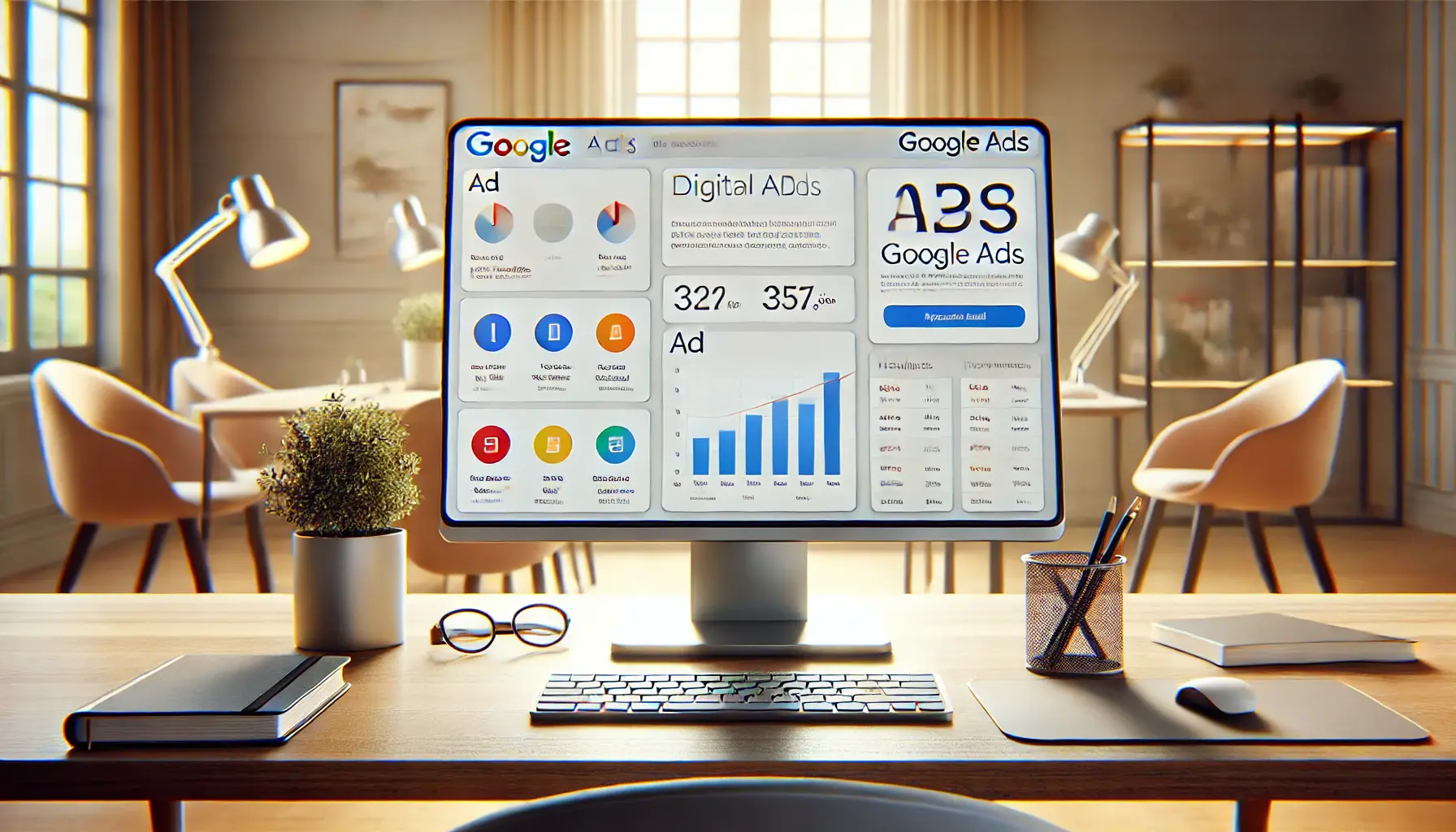Dynamic text is revolutionizing the way we interact with digital content, offering a new dimension to user engagement and content personalization.
This innovative approach to typography and design not only enhances the aesthetic appeal of websites and applications but also significantly improves user experience by making content more relevant and interactive.
As we delve into the world of dynamic text, it’s essential to understand its impact on typography and how it can be leveraged to create compelling, user-centric designs.
The essence of dynamic text lies in its ability to change in real-time based on various factors such as user behavior, context, or data inputs.
This adaptability makes it a powerful tool for designers and developers looking to craft more personalized and interactive experiences.
By integrating dynamic text into their projects, creators can ensure that their content remains fresh, relevant, and engaging, thereby fostering a deeper connection with their audience.
- The Fundamentals of Dynamic Text in Design
- Implementing Dynamic Text: Strategies and Considerations
- Dynamic Text in User Interaction and Engagement
- Challenges and Solutions in Dynamic Text Integration
- Future Trends in Dynamic Text and Typography
- Best Tools and Technologies for Dynamic Text Implementation
- Integrating Dynamic Text into User Experience Design
- Embracing the Future with Dynamic Text
- FAQs on Designing with Dynamic Text for Interactive Experiences
The Fundamentals of Dynamic Text in Design
Understanding Dynamic Text
At its core, dynamic text refers to any text content that can change dynamically based on certain triggers or conditions.
This could range from user-specific data, such as names and preferences, to contextual information like location and time.
The power of dynamic text is its ability to make digital experiences feel more personalized and alive, as opposed to static and one-dimensional.
Implementing dynamic text requires a blend of design sensibility and technical prowess.
Designers must anticipate the various states and variations of text content, ensuring that the design remains coherent and visually appealing across all possible outcomes.
This involves careful planning around font choices, layout adjustments, and responsive design principles to accommodate the fluid nature of dynamic content.
Benefits of Incorporating Dynamic Text
The inclusion of dynamic text in digital design projects brings numerous benefits.
For one, it significantly enhances user engagement by delivering personalized content that resonates with the individual user’s needs and preferences.
This level of personalization can lead to increased user satisfaction, higher conversion rates, and improved overall user experience.
Moreover, dynamic text allows for more efficient content management.
Instead of creating multiple versions of the same design to cater to different audiences or contexts, designers can use dynamic text to automatically adjust the content.
This not only saves time and resources but also ensures content consistency and accuracy across different user interactions.
Dynamic text transforms static pages into interactive experiences, making content more relevant and engaging for each user.
Implementing Dynamic Text: Strategies and Considerations
Integrating dynamic text into your design projects involves more than just technical implementation.
It requires a strategic approach that considers the user’s journey, the context of the interaction, and the overall design ethos.
Here are some key strategies and considerations for effectively implementing dynamic text in your designs:
Understanding User Context: The first step in implementing dynamic text is to understand the context in which your users will interact with your content.
This includes:
- Identifying user demographics and preferences
- Understanding the devices and platforms users will use to access your content
- Considering the physical and cultural context of your audience
Designing for Flexibility: Dynamic text requires designs to be flexible and adaptable.
This involves:
- Choosing fonts and layouts that can accommodate variations in text length and complexity
- Ensuring that your design remains visually balanced and coherent across different states
- Using responsive design techniques to ensure content looks great on any screen size
Technical Implementation: On the technical side, implementing dynamic text involves:
- Using web technologies such as CSS, JavaScript, and server-side scripting to dynamically generate text content
- Ensuring that dynamic text implementations do not negatively impact website performance or load times
- Considering accessibility and ensuring that dynamic text is accessible to users with disabilities
Best Practices for Dynamic Text Usage
When incorporating dynamic text into your projects, following best practices ensures that your implementation is effective, user-friendly, and enhances the overall user experience.
Some of these best practices include:
- Keeping dynamic content relevant and meaningful to the user
- Avoiding overuse of dynamic text to prevent user overwhelm or confusion
- Testing your dynamic text implementations across different devices and browsers to ensure consistency and reliability
By carefully considering these strategies and best practices, designers and developers can leverage dynamic text to create more engaging, personalized, and interactive experiences for their users.
The key is to balance the dynamic nature of the content with the overall design and user experience goals, ensuring that the end result is both innovative and user-centric.
Always test dynamic text implementations in real-world scenarios to ensure they meet user expectations and enhance the user experience.
Dynamic Text in User Interaction and Engagement
Dynamic text plays a pivotal role in enhancing user interaction and engagement within digital platforms.
By tailoring content to the individual user, dynamic text can significantly boost the user’s connection with the content, leading to a more engaging and memorable experience.
Here’s how dynamic text contributes to user interaction and engagement:
Personalization at Scale: Dynamic text enables personalization at scale, allowing designers to create individualized experiences for a wide audience without manual intervention.
This personalization can manifest in various forms, including:
- Personalized greetings and messages that address the user by name
- Content recommendations based on the user’s past behavior or preferences
- Localized information such as weather updates, event listings, or news
Enhancing User Experience: The use of dynamic text directly impacts the user experience by making it more relevant and engaging.
This is achieved through:
- Adaptive content that changes based on the time of day, user location, or user actions
- Interactive storytelling that evolves based on user choices, creating a unique narrative journey for each user
- Feedback loops that adjust content based on user interactions, ensuring that the content remains fresh and relevant
Case Studies of Dynamic Text Implementation
Several successful digital platforms have leveraged dynamic text to enhance user engagement and interaction.
While specific details and metrics may vary, the underlying principle of using dynamic text to create a more personalized and engaging user experience remains consistent.
Here are a few hypothetical examples:
- A news website that dynamically updates headlines and content based on the reader’s location and reading history, resulting in increased time spent on the site.
- An e-commerce platform that uses dynamic text for personalized product recommendations, leading to higher conversion rates and customer satisfaction.
- An educational app that adapts its lessons and feedback based on the learner’s progress, resulting in improved learning outcomes and user retention.
These examples illustrate the versatility and effectiveness of dynamic text in creating engaging digital experiences.
By understanding the user’s context and preferences, designers can use dynamic text to craft content that resonates on a personal level, driving engagement and interaction.
Consider the user’s journey and how dynamic text can be used at different touchpoints to enhance engagement and provide value.
Challenges and Solutions in Dynamic Text Integration
While dynamic text offers numerous benefits for enhancing user experience and engagement, its integration into digital platforms comes with its own set of challenges.
Addressing these challenges effectively is crucial for leveraging the full potential of dynamic text.
Here, we explore common obstacles and propose practical solutions to ensure successful implementation.
Challenge: Maintaining Design Consistency
One of the primary challenges with dynamic text is ensuring that the design remains consistent and visually appealing across all variations of dynamic content.
Inconsistent designs can lead to a disjointed user experience, undermining the benefits of personalization.
Solution: To overcome this challenge, designers should establish flexible design systems that accommodate the variability of dynamic text.
This includes defining typography guidelines, grid layouts, and responsive design principles that adapt gracefully to different content lengths and types.
Employing a modular design approach can also facilitate the seamless integration of dynamic text within various parts of the interface.
Challenge: Performance Optimization
Dynamic text generation, especially when it involves real-time data fetching and processing, can impact the performance of digital platforms.
Slow load times and laggy interactions can detract from the user experience, negating the advantages of personalized content.
Solution: Optimizing performance involves minimizing the amount of data fetched in real-time and leveraging efficient algorithms for dynamic text generation.
Caching frequently accessed data and using content delivery networks (CDNs) can also improve load times.
Additionally, asynchronous loading of dynamic content ensures that the user interface remains responsive while data is being fetched and processed.
Ensuring Accessibility
Ensuring that dynamic text is accessible to all users, including those with disabilities, is another critical challenge.
Dynamic content must be designed to be fully accessible, ensuring compliance with web accessibility standards.
Solution: To ensure accessibility, dynamic text should be implemented with semantic HTML and ARIA (Accessible Rich Internet Applications) attributes that provide screen readers and assistive technologies with the necessary context to interpret dynamic content correctly.
Regular accessibility testing and adherence to WCAG (Web Content Accessibility Guidelines) further ensure that dynamic text contributes positively to the user experience for all users.
Challenge: Data Privacy and Security
Personalization through dynamic text often relies on user data, raising concerns about privacy and security.
Users are increasingly wary of how their data is collected, used, and stored.
Solution: Addressing data privacy and security concerns involves transparently communicating with users about data collection practices and ensuring compliance with data protection regulations such as GDPR (General Data Protection Regulation).
Implementing robust data security measures and giving users control over their data preferences can build trust and enhance the user experience.
Effective integration of dynamic text requires careful consideration of design consistency, performance optimization, accessibility, and data privacy.
Future Trends in Dynamic Text and Typography
The landscape of digital design and typography is continually evolving, with dynamic text at the forefront of this transformation.
As technology advances, new trends emerge, shaping the future of how content is created, displayed, and interacted with.
Here, we explore some of the most promising trends in dynamic text and typography that are set to redefine user experiences.
Adaptive Typography
Adaptive typography refers to the concept of typefaces and text layouts that automatically adjust based on user context, device specifications, and environmental factors.
This trend is gaining traction as it promises to deliver highly personalized reading experiences.
Key aspects of adaptive typography include:
- Responsive font sizes and weights that change based on the device’s screen size and resolution.
- Adjustments to letter spacing and line height in real-time to improve readability under different lighting conditions or user preferences.
Augmented Reality (AR) and Typography
With the rise of augmented reality technologies, typography is no longer confined to two-dimensional spaces.
AR presents an opportunity for dynamic text to become part of the three-dimensional world, offering immersive and interactive experiences.
Applications of AR in typography might involve:
- Overlaying dynamic text on real-world objects through AR glasses or smartphone cameras.
- Creating interactive learning experiences where text and information are displayed contextually in the user’s environment.
AI-Powered Dynamic Text
Artificial intelligence (AI) is set to play a significant role in the future of dynamic text, enabling more sophisticated personalization and content generation.
AI-powered dynamic text could lead to:
- Automatically generated content that adapts to the user’s reading habits, interests, and interaction patterns.
- Real-time language translation and content localization, making digital experiences accessible to a global audience.
Environmental and Contextual Typography
As devices become more aware of their surroundings, dynamic text can adapt not just to user data but also to environmental and contextual factors.
This trend could see typography that changes based on:
- The user’s current activity, time of day, or geographic location.
- Environmental conditions such as ambient light, weather, or noise levels.
These future trends in dynamic text and typography highlight the potential for more adaptive, personalized, and immersive digital experiences.
As designers and developers explore these possibilities, the way we interact with digital content is poised for significant change, making every interaction more relevant, engaging, and tailored to the individual user.
The future of dynamic text and typography lies in adaptive designs, augmented reality integrations, AI-powered personalization, and environmental contextualization.
Best Tools and Technologies for Dynamic Text Implementation
The implementation of dynamic text into digital experiences requires the right set of tools and technologies.
From web development frameworks to content management systems, the choice of technology can significantly impact the effectiveness and efficiency of dynamic text integration.
This section highlights some of the best tools and technologies currently available for creating dynamic and interactive text experiences.
Web Development Frameworks
Several web development frameworks offer robust support for dynamic text, making it easier for developers to create interactive and personalized content.
Notable mentions include:
- React: A JavaScript library for building user interfaces, React allows for the creation of reusable UI components that can dynamically update content based on user interactions or data changes.
- Angular: This platform and framework for building single-page client applications use HTML and TypeScript. Angular’s two-way data binding feature is particularly useful for implementing dynamic text.
- Vue.js: Known for its simplicity and flexibility, Vue.js enables developers to build dynamic web interfaces. Its reactive data binding system makes it a great choice for dynamic text applications.
Content Management Systems (CMS)
Content Management Systems that support dynamic content can simplify the process of managing and delivering personalized text experiences.
Some CMS platforms known for their dynamic text capabilities include:
- WordPress: With its vast ecosystem of plugins, WordPress can be customized to support dynamic text, especially when combined with advanced custom fields and dynamic content plugins.
- Drupal: This open-source CMS is highly customizable and offers modules specifically designed for creating dynamic content and personalized user experiences.
Typography and Design Tools
Creating visually appealing dynamic text also requires typography and design tools that offer flexibility and control over text appearance.
Tools that stand out in this category include:
- Adobe Fonts: Offering a vast collection of fonts that can be integrated into web and mobile applications, Adobe Fonts allows for creative typography designs that enhance dynamic text.
- Google Fonts: As a free service offering a wide variety of fonts, Google Fonts is easily implemented into web projects, supporting dynamic text with diverse typographic styles.
Choosing the right tools and technologies for dynamic text implementation is crucial for achieving the desired user experience.
By leveraging these frameworks, CMS platforms, and design tools, developers and designers can create dynamic text solutions that are both engaging and efficient.
Relying solely on one technology or tool for dynamic text implementation may limit creativity and flexibility. It’s essential to explore and combine different technologies to achieve the best results.
Integrating Dynamic Text into User Experience Design
Integrating dynamic text into user experience (UX) design requires a thoughtful approach that prioritizes user needs and preferences.
It’s not just about making text change dynamically; it’s about enhancing the user’s interaction with the digital product in a meaningful way.
This integration process involves several key steps and considerations to ensure that dynamic text contributes positively to the overall UX.
Identifying Opportunities for Dynamic Text
The first step in integrating dynamic text is to identify where it can add the most value.
This involves understanding the user journey and pinpointing moments where personalized or dynamic content can enhance the experience.
Opportunities for dynamic text might include:
- User onboarding processes, where personalized guidance can improve user understanding and engagement.
- Dashboard interfaces, where dynamic text can display relevant data and insights tailored to the user’s actions or preferences.
- E-commerce platforms, where personalized product recommendations or promotions can increase conversion rates.
Designing for Context and Relevance
For dynamic text to be effective, it must be contextually relevant and designed with the user’s needs in mind.
This means considering the user’s context, such as their location, time of day, or current task, and ensuring that the dynamic text enhances rather than disrupts the user experience.
Design considerations include:
- Ensuring that dynamic text is seamlessly integrated into the overall design, maintaining consistency in typography, color, and layout.
- Using dynamic text to provide helpful information or shortcuts based on the user’s behavior or history with the product.
- Testing different variations of dynamic text to determine what resonates best with users, using A/B testing or user feedback.
Measuring the Impact of Dynamic Text
Once dynamic text is implemented, it’s crucial to measure its impact on the user experience.
This can involve tracking user engagement metrics, such as time spent on the page, interaction rates, or conversion rates, and gathering user feedback through surveys or interviews.
Insights gained from these measurements can inform further refinements to the dynamic text, ensuring that it continues to meet user needs and contribute to a positive UX.
Integrating dynamic text into UX design is a powerful way to create more personalized, engaging, and effective digital experiences.
By carefully identifying opportunities for dynamic text, designing for context and relevance, and measuring its impact, designers can ensure that dynamic text serves as a valuable component of the overall user experience strategy.
Always consider the user’s perspective when integrating dynamic text into UX design, ensuring that it adds value and enhances the user experience.
Embracing the Future with Dynamic Text
As we’ve explored the multifaceted world of dynamic text, it’s clear that this innovative approach to typography and design is not just a fleeting trend but a fundamental shift towards more interactive, personalized, and engaging digital experiences.
The integration of dynamic text into user experience design represents a significant leap forward in how we conceive and interact with digital content, offering unparalleled opportunities for engagement and personalization.
The Power of Personalization
At the heart of dynamic text lies the power of personalization.
By tailoring content to individual users’ needs, preferences, and contexts, designers and developers can create experiences that resonate on a personal level.
This not only enhances user satisfaction and loyalty but also opens up new avenues for creativity and innovation in digital design.
The ability to dynamically adjust text based on real-time data and user interactions ensures that every experience is as unique as the user themselves, making digital platforms more relevant and engaging.
Challenges and Opportunities Ahead
Despite the clear benefits, integrating dynamic text into digital experiences comes with its own set of challenges.
From maintaining design consistency to ensuring accessibility and optimizing performance, designers and developers must navigate a complex landscape to fully leverage the potential of dynamic text.
However, these challenges also present opportunities for growth and innovation.
By embracing new tools, technologies, and best practices, professionals in the field can overcome these obstacles and push the boundaries of what’s possible with dynamic text.
- The need for flexible design systems that can adapt to the variability of dynamic content.
- The importance of performance optimization to ensure that dynamic text does not detract from the user experience.
- The critical role of accessibility in making dynamic text experiences inclusive for all users.
In conclusion, dynamic text is set to play a pivotal role in the future of digital design and user experience.
Its ability to create more personalized, engaging, and interactive experiences positions it as a key element in the evolution of digital content.
As we move forward, the continued exploration and adoption of dynamic text will undoubtedly lead to more innovative, user-centric digital experiences.
The journey of integrating dynamic text into our digital landscapes is just beginning, and its full potential is yet to be realized.
The future of dynamic text in design is bright, promising a more personalized, engaging, and interactive digital world for all.
Quality web design is key for a great website! Check out our service page to partner with an expert web design agency.
FAQs on Designing with Dynamic Text for Interactive Experiences
Explore common questions about integrating dynamic text into your designs to enhance interactivity and user engagement.
Dynamic text refers to text content that changes based on user data, preferences, or actions, enhancing personalization and engagement.
By personalizing content in real-time, dynamic text makes digital experiences more relevant and engaging for each user.
Yes, if not optimized properly, dynamic text can affect load times, but efficient coding and caching strategies can mitigate this.
Best practices include ensuring content relevance, maintaining design consistency, and optimizing for performance and accessibility.
Effective implementation involves understanding user context, designing for flexibility, and using appropriate web technologies.
Web development frameworks like React, Angular, and content management systems such as WordPress support dynamic text integration.
When properly implemented with semantic HTML and ARIA labels, dynamic text can be made accessible to users with disabilities.
Future trends include adaptive typography, augmented reality applications, AI-powered personalization, and environmental contextualization.











